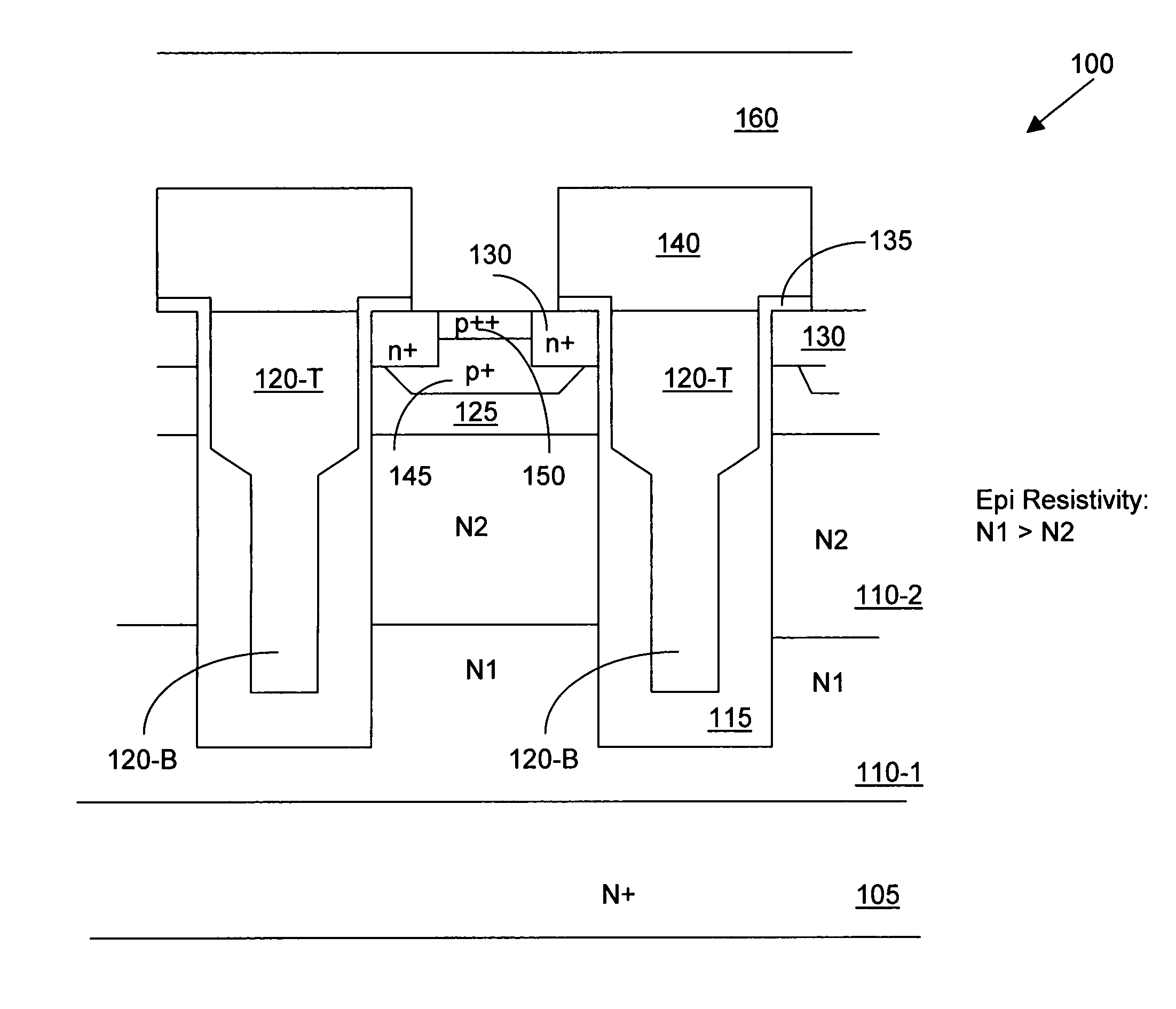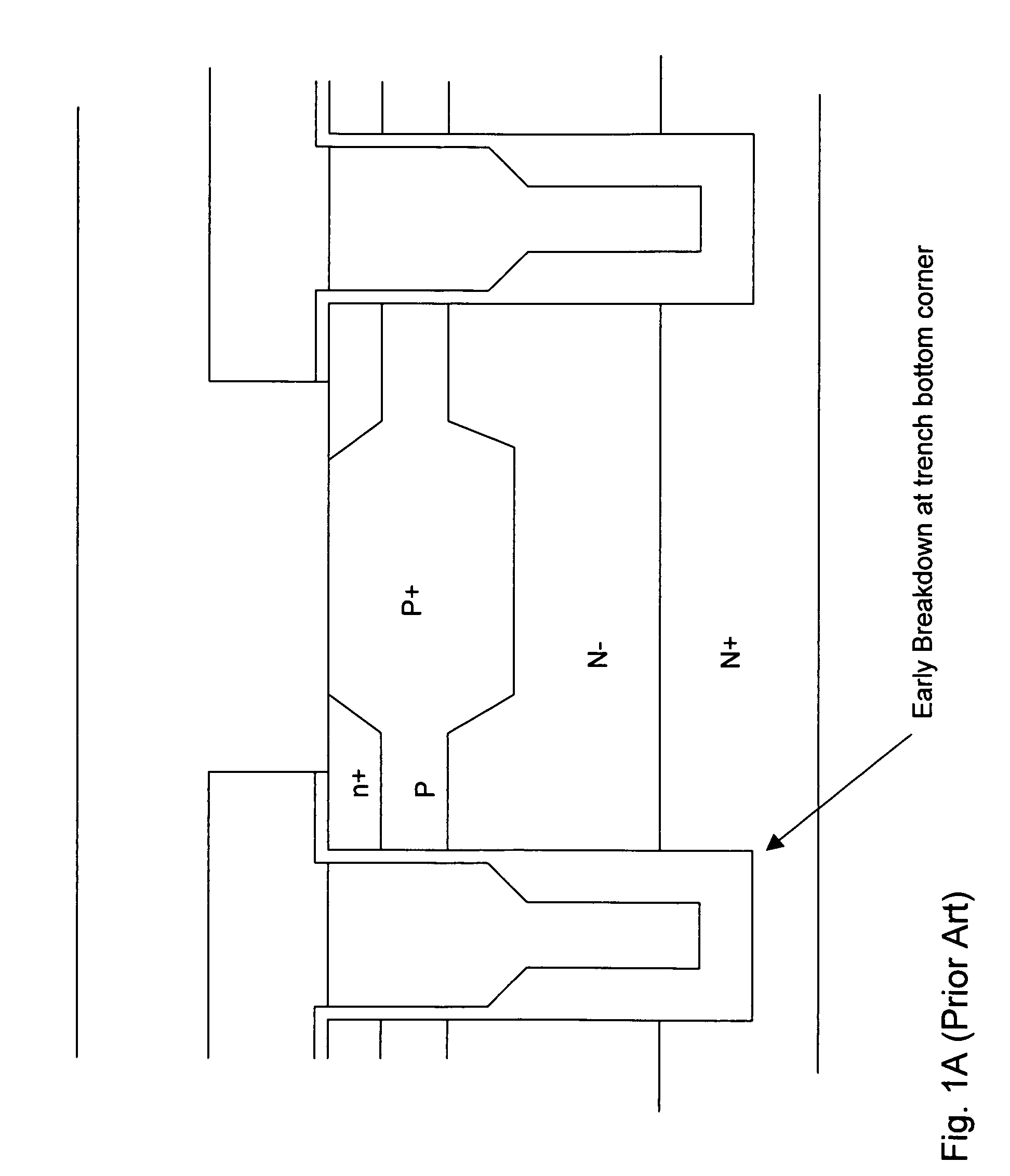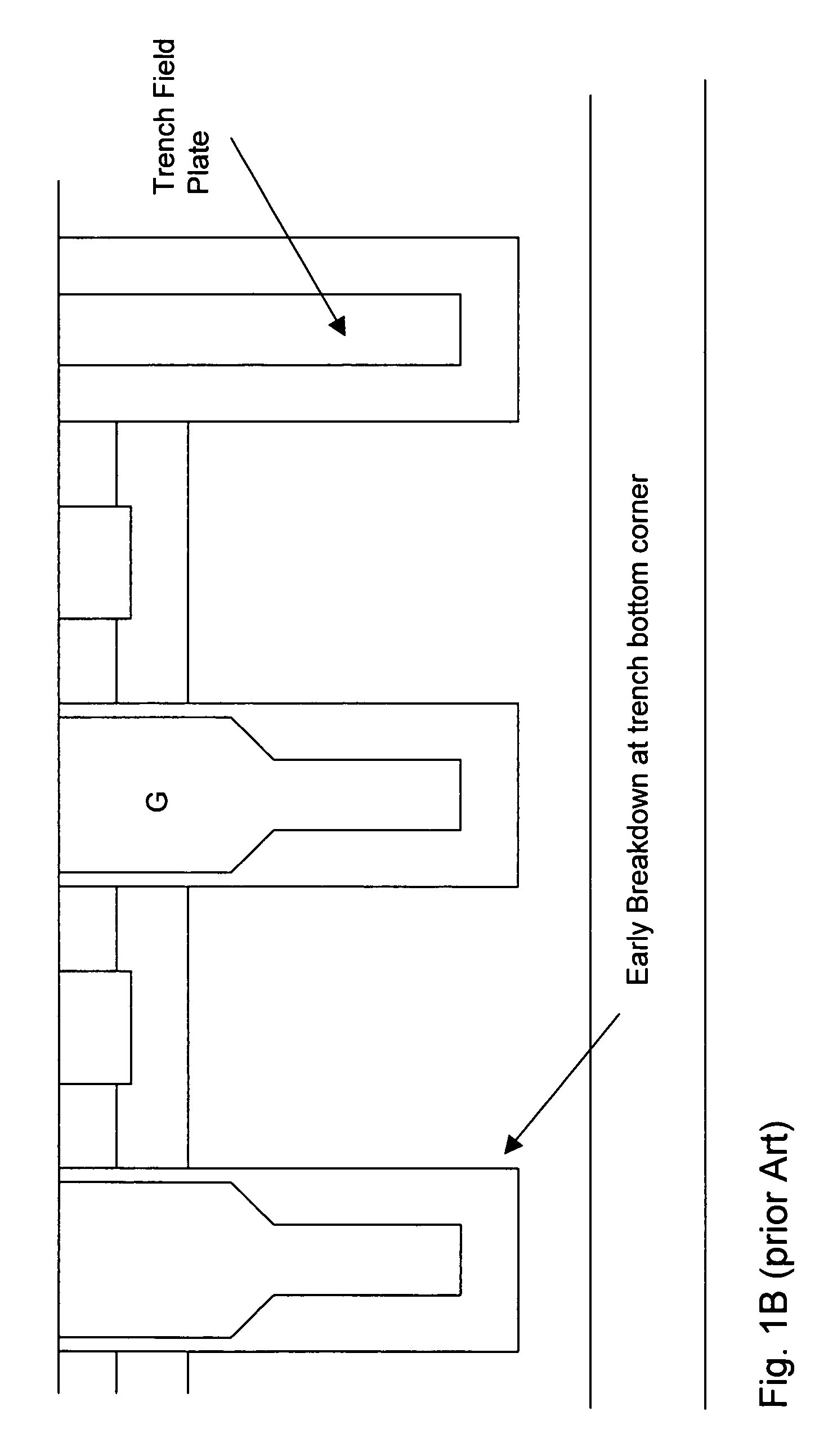Trench MOSFET with double epitaxial structure
a technology of mosfet and mosfet plate, which is applied in the direction of semiconductor devices, electrical apparatus, transistors, etc., can solve the problems of device design facing another technical difficulty, device may not support the requirement of breakdown voltage, and further technical difficulties of device implementation, so as to reduce device resistance and low epitaxial resistivity
- Summary
- Abstract
- Description
- Claims
- Application Information
AI Technical Summary
Benefits of technology
Problems solved by technology
Method used
Image
Examples
Embodiment Construction
[0016]Referring to FIG. 2 for a side cross sectional view of a MOSFET device 100 formed on a N+ substrate 105 supporting a first and second N-epitaxial layer 110-1 and 110-2 having a N-dopant concentration to provide resistivity represented by N1 and N2 respectively. The resistivity N1 is greater than resistivity N2, i.e., N1>N2. The MOSFET device further includes a plurality of trenched polysilicon gates 120. Each of these trenched gates includes a top gate portion 120-T and a bottom portion 120-B wherein the top portion 120-T and the bottom portion 120-B are formed with single polysilicon deposition processes as will be further described below. At the bottom portion of the trenched gate, a gate oxide layer 115 with a greater thickness surrounds and insulates the gate 120-B. In the top portion of the gates 120-T, a gate oxide layer 135 has a normal and thinner layer thickness surrounds and insulates the top portion of the gate 120-T. The bottom thick gate oxide 115 is formed first ...
PUM
 Login to View More
Login to View More Abstract
Description
Claims
Application Information
 Login to View More
Login to View More - R&D
- Intellectual Property
- Life Sciences
- Materials
- Tech Scout
- Unparalleled Data Quality
- Higher Quality Content
- 60% Fewer Hallucinations
Browse by: Latest US Patents, China's latest patents, Technical Efficacy Thesaurus, Application Domain, Technology Topic, Popular Technical Reports.
© 2025 PatSnap. All rights reserved.Legal|Privacy policy|Modern Slavery Act Transparency Statement|Sitemap|About US| Contact US: help@patsnap.com



